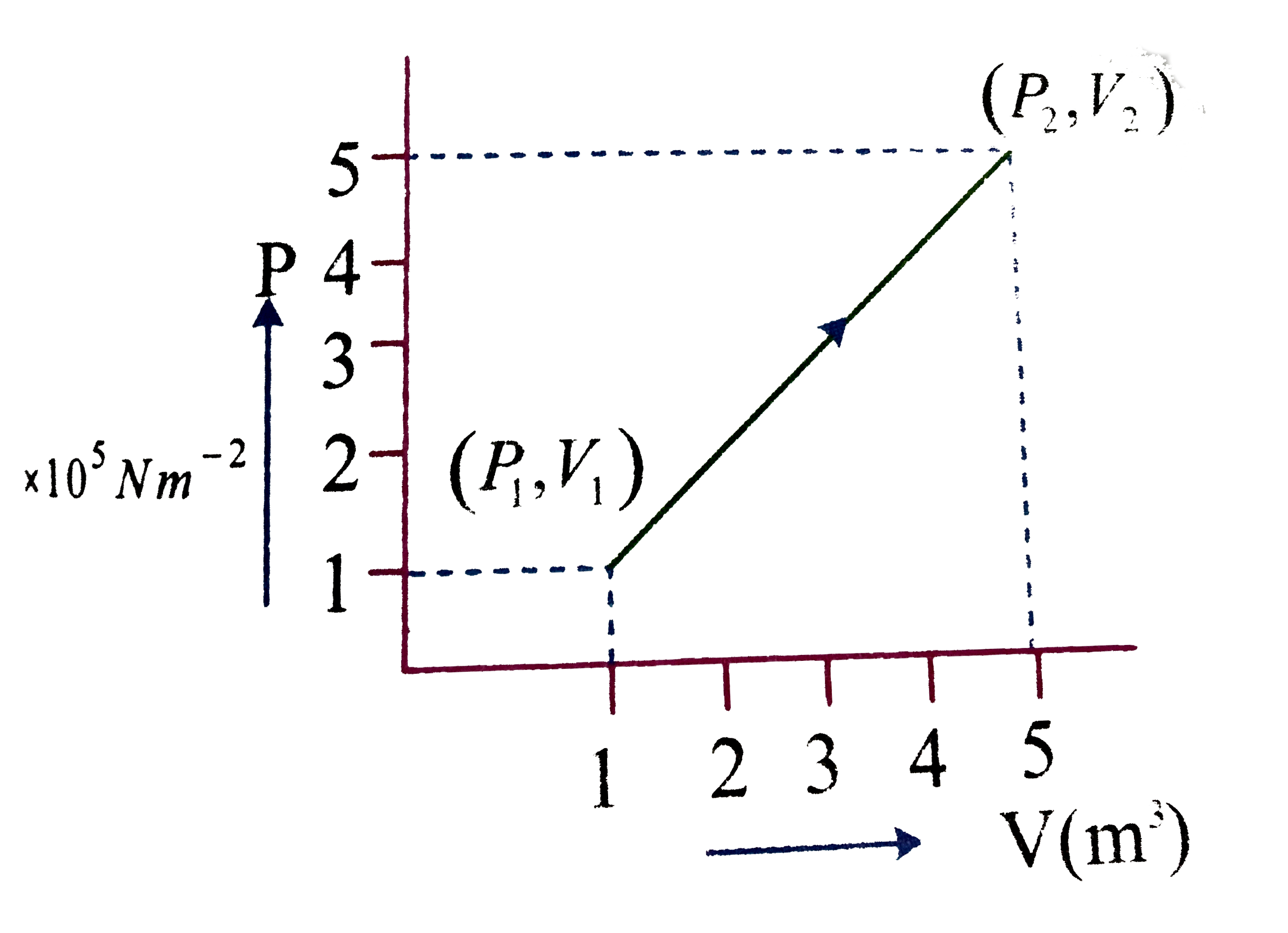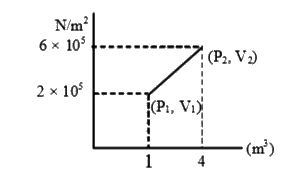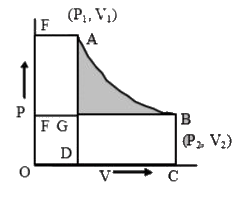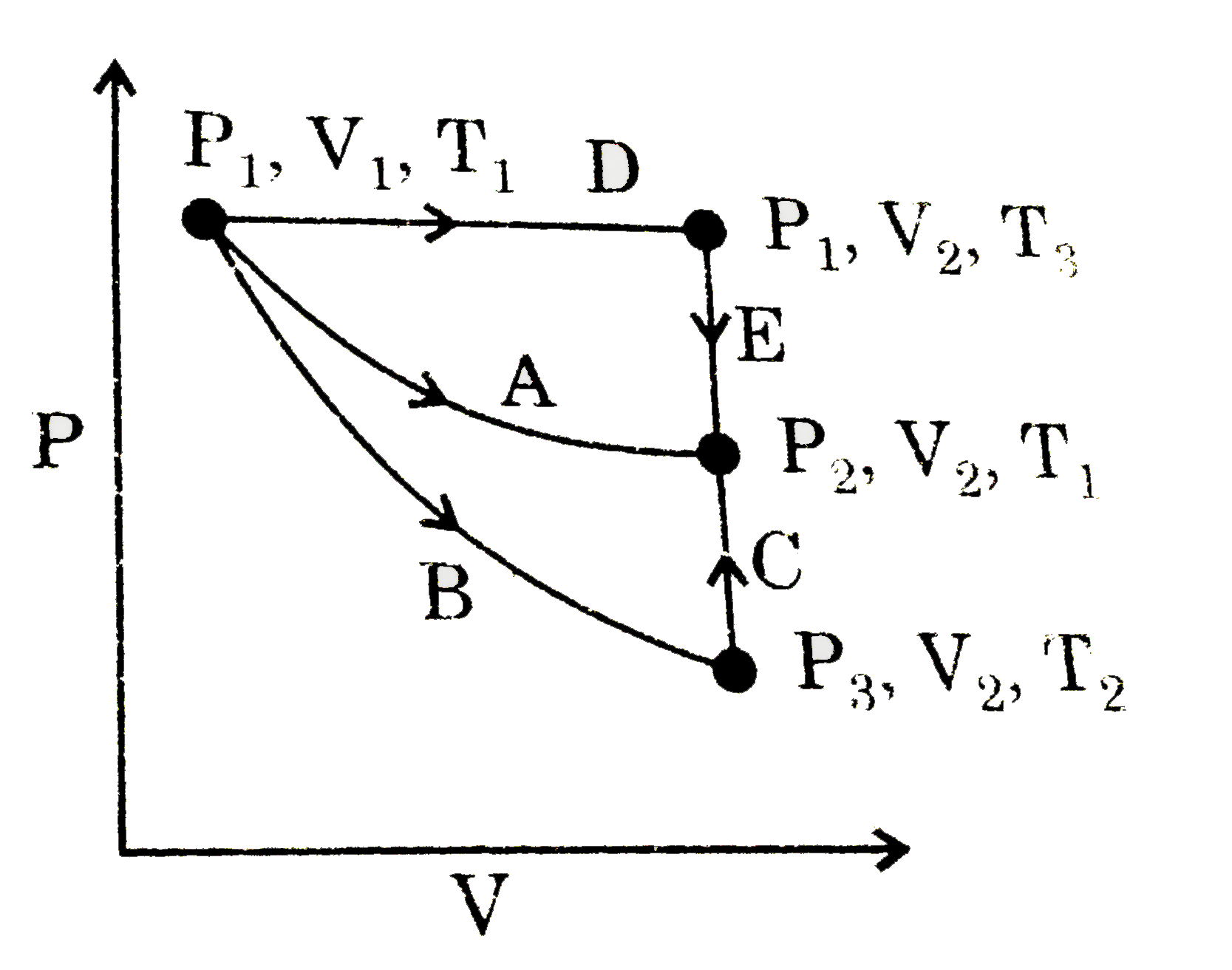A system changes from the state (P1,V1) to (P2V2) as shwon in the diagram. The workdone by the system is

7.5×105joule
7.5×105erg
12×105joule
6×105joule
The correct Answer is:D
Step by step video, text & image solution for A system changes from the state (P_(1),V_(1)) to (P_(2)V_(2)) as shwon in the diagram. The workdone by the system is by Physics experts to help you in doubts & scoring excellent marks in Class 11 exams.
Topper's Solved these Questions
Similar Questions
The P - V diagram of a system undergoing thermodynamic changes is as shown in the figure. The work done by the system in going from A→B→C is 30 J. If 68 J of heat is given to the system, then the change in the internal energy of the system between A and C is
 View Solution
View SolutionA thermodynamic system goes from states (i) P1,V to 2P1,V (ii) P,V1 to P.2V1. Then work done in the two cases is
View Solution
Knowledge Check
- Question 1 - Select One
A system changes from the state (P1,V1) to (P2,V2) as shown in the figure below. What is the work done by the system –
 A7.5×105 jouleB7.5×104 ergC12×105 jouleD6×105 joule
A7.5×105 jouleB7.5×104 ergC12×105 jouleD6×105 joule - Question 2 - Select One
A thermo-dynamical system is changed from state ) ,(P1,V1) to (P2,V2) by two different process. The quantity which will remain same will be
AΔQBΔWCΔQand ΔWDΔQ−ΔW - Question 3 - Select One
An ideal gas is transformed from state A(P1,V1) to the state B(P2,V2) through path AB. In this process the work done by the gas is
 AW = area ABCDABW = area ABEFACW = area ABGADW = area ABCOFA
AW = area ABCDABW = area ABEFACW = area ABGADW = area ABCOFA
A thermodynamic system goes from states (i) P1V to 2P1 , V (ii) P , V to P , 2 V . Then work done in the two cases is
View SolutionA gaseous system changes from state A(P1,V1,T1) to B(P2,V2,T2), B to C(P3,V3,T3) and finally from C to A. The whole process may be called
View SolutionA gaseous system changes from state A(P1,V1,T1) to B(P2,V2,T2), B to C (P3,V3T3) and finally from C to A. The whole process may be called
View SolutionA gaseous system changes from state A(P1,V1,T1) to B(P2,V2,T2) to C(P3,V3,T3) and finally from C to A. The whole process may be called :
View SolutionFor an ideal monoatomic gas, an illustration of three different paths A,(B+C) and (D+E) from an initial state P1,V1,T1 to a final state P2,V2,T1 is shown in the given figure .

Path A represents a reversible isothermal from P1V1 to P2,V2, path (B+C) represent a reversible adiabatic expansion (B) from P1,V1,T1 to P3,V2,T2 followed by reversible heating of the gas at constant volume (C) from P3,V2,T2 to P2,V2,T1. Path (D+E) represents a reversible expansion at constant pressure P1(D) from P1,V1,T1 to P1,V2,T3 followed by a reversible cooling at constant volume V2(E) form P1,V2,T3 to P2,V2,T1
What is qrev for path (A)?View Solution

